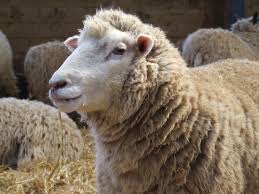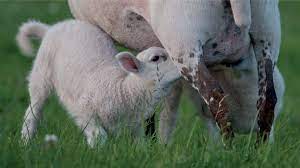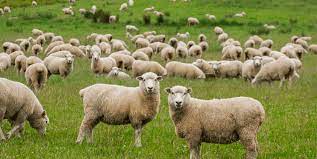In the production guide of sheep, careful management of the pregnant, parturient, and lactating ewes will have a marked influence on the percentage of lambs dropped and reared successfully. So, the following steps may be taken to afford proper attention to these animals:
Management of Ewe

Do not handle the pregnant ewes too frequently. Separate the advanced pregnant ewes from the main flock and take effective care of their feeding and management.
Extra feed during the latter part of pregnancy (3–4 weeks before parturition) will be beneficial for the condition of the pre-parturient ewes, which will help in improving the milk production of ewes, birth weight, and growth of lambs.
Inadequate and poor nutrition may result in pregnancy, toxemia, abortions, and premature births of weak lambs. Bring lambing ewes into lambing corals 4-6 days before parturition and provide maximum comfort. If possible, provide soft, clean bedding and individual lambing pens.
Read Also: All You Need To Know About Grass Hoppers
Watch gestation length, which ranges from 142 to over 150 days. Early-maturing breeds have a slightly shorter gestation period. Save parturient ewes from cold and chilly weather.
Management of Lamb

• Care of lambs from birth to slaughter age.
• The average gestation period is about 150 days.
About a week later, the following are observed:
• Production of milk from the mammary gland.
• Ewe becomes nervous and excited.
• After a few hours of parturition, their expulsion of the bag containing a fluid
• It is not uncommon to have twin births.
Read Also: Nonparasitic Disorders on Beans Production: Identification & Control
Steps
• The lamb should be able to suckle the dam 15-20 minutes after birth; if this does not happen, the lamb has to be assisted by placing the ewe’s teat into the lamb’s mouth.
• Keep the ewe and lamb in a confinement for at least 24 hours; this is done in order to allow the ewe and the lamb to get used to each other.
• The livestock man should monitor closely the health of the ewe and lamb. Provide for the ewe water, good-quality hay, silage, or freshly cut silage.
Pre-weaning management of lamb
This covers about 2–5 months.
Steps
• Take care of the navel by dipping it in a 7% solution of iodine to avoid injection.
• Take data on the lamb (see farm records).
• Provide creep feeding under intensive conditions when ewes are milking.
• The feeding is separate from that of the mother.
Read Also: Ways to Make Money from Paint Recycling

